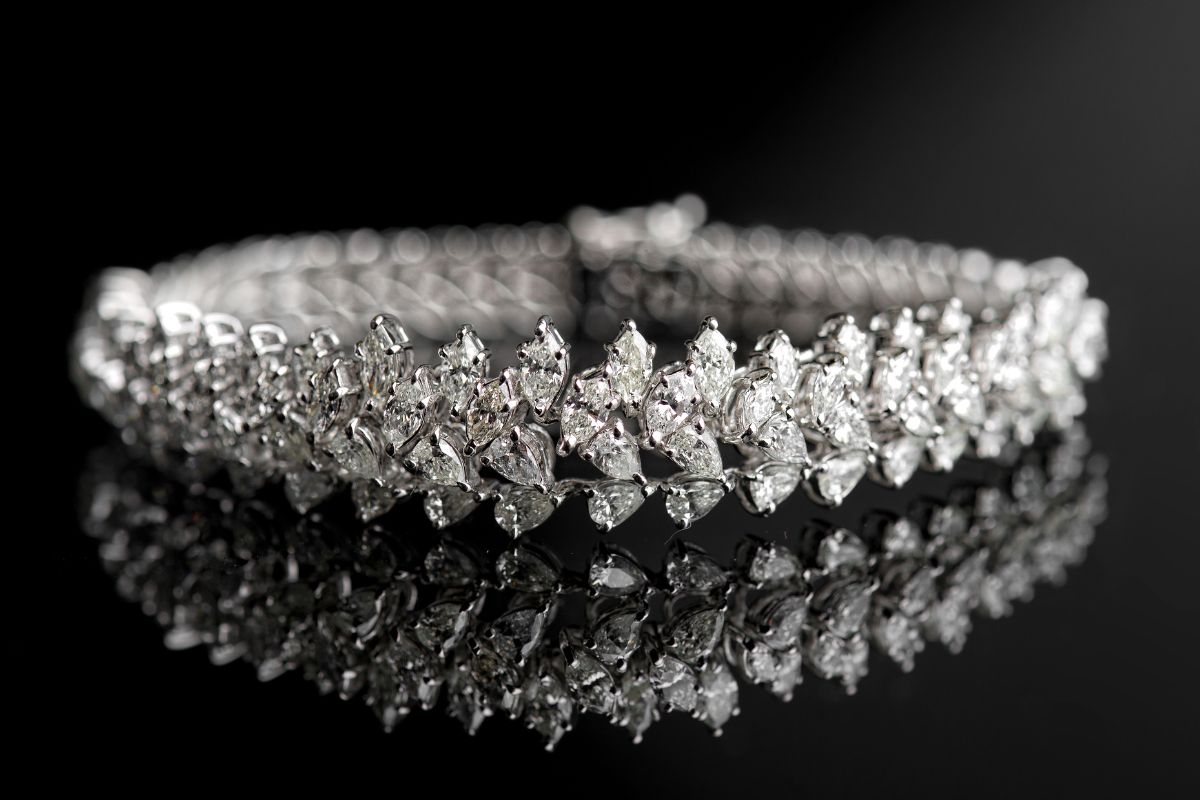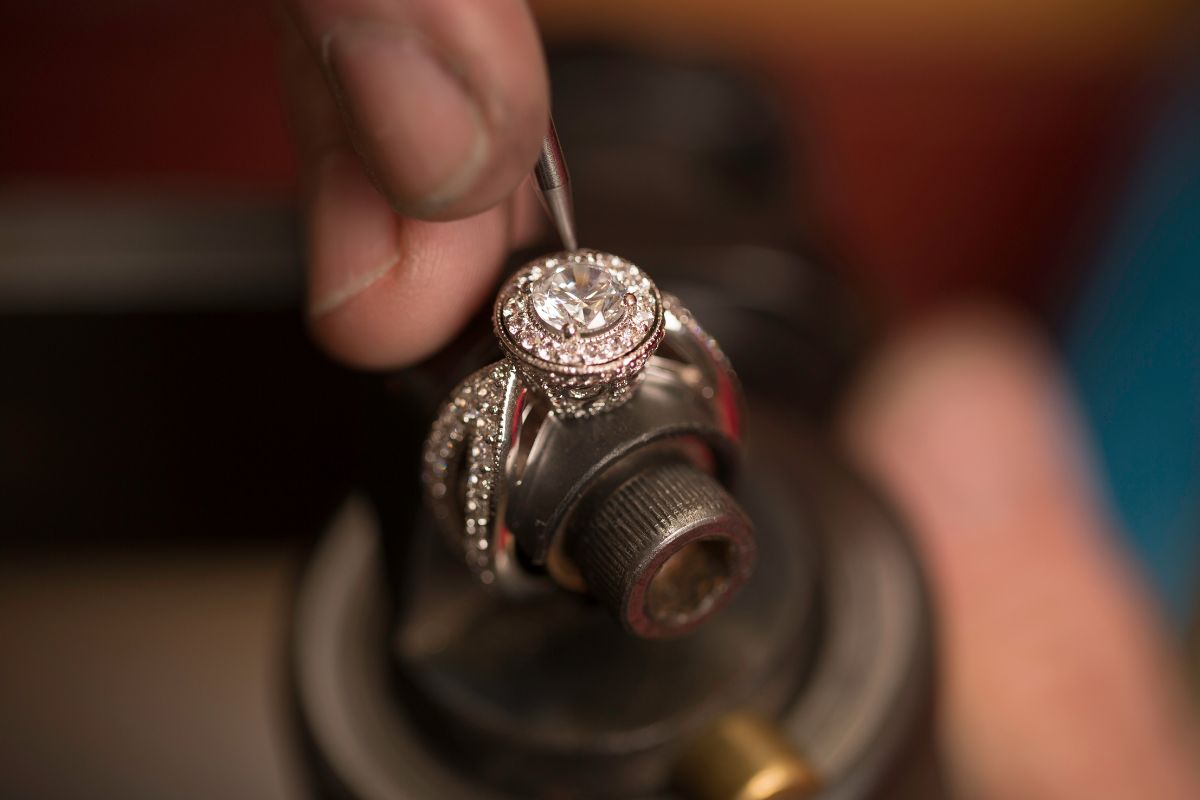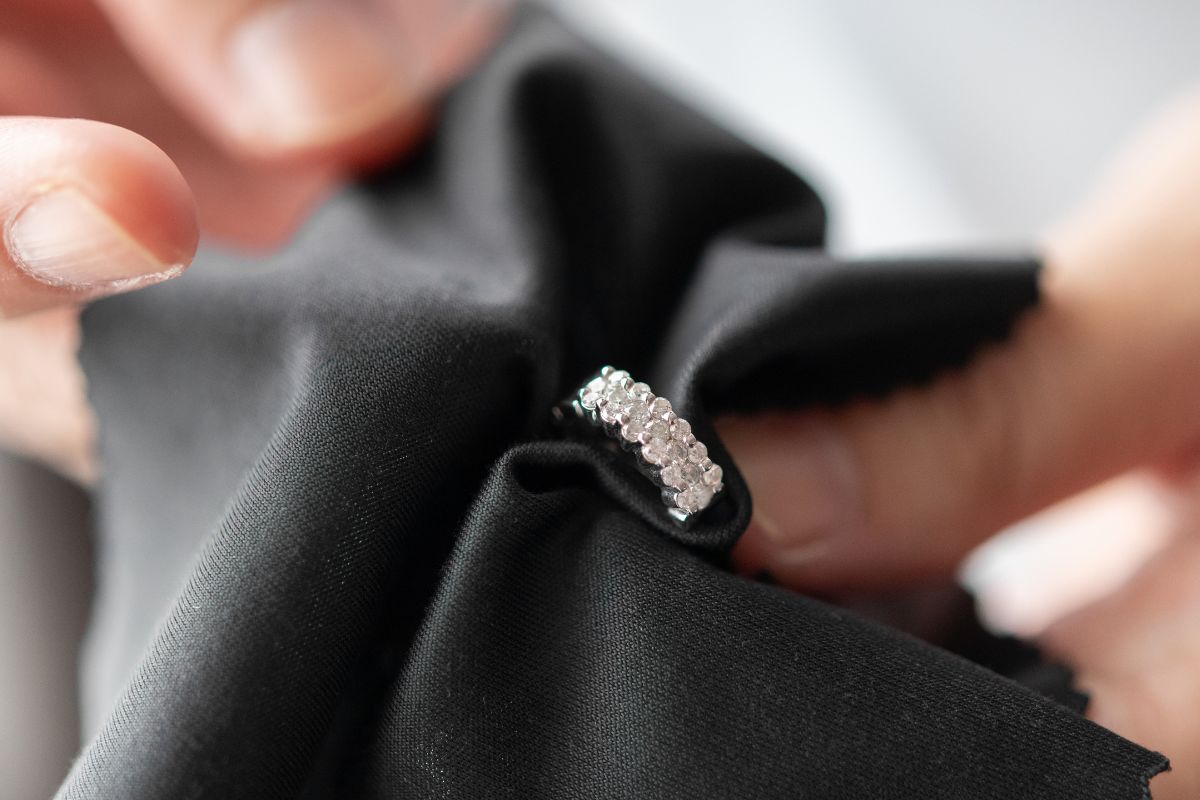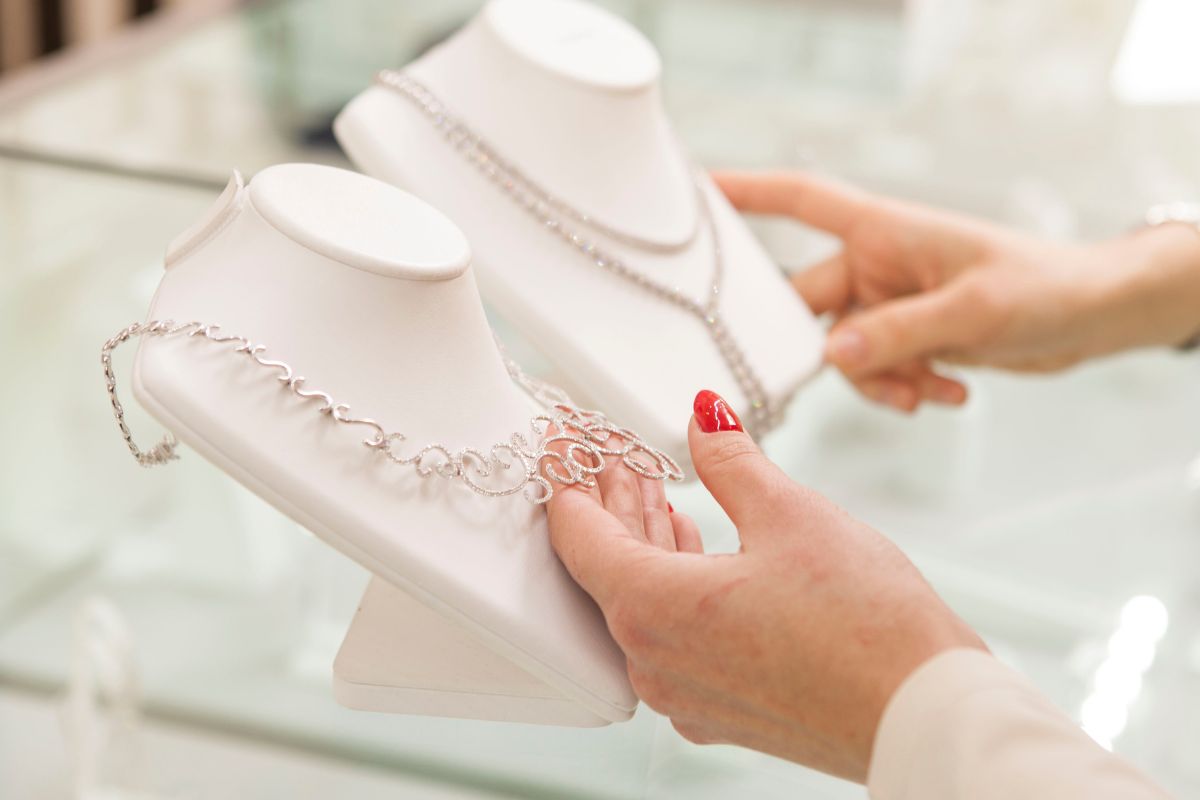
What is Milgrain: Unveiling the Charm of Detailed Jewelry Design
Milgrain is a detail often found in jewelry design that carries with it a rich heritage and a timeless appeal. In essential terms, milgrain refers to a row of tiny beads or hemispherical shapes that are closely set to form a border on a piece of jewelry.
Originally, this detail was achieved by a technique of hand engraving. But, as technology in jewelry making has advanced, so have the methods of creating this distinctive ornamentation.
It's not just the historical aspect that makes milgrain special. It's how this intricate feature crafts a unique texture that catches the light, giving any piece of jewelry a touch of elegance and visual interest.
From rings to pendants, the inclusion of milgrain can transform a simple piece into something far more elaborate and sophisticated.
While it has been a staple in antique jewelry, the appeal of milgrain endures. It is also frequently seen in modern jewelry collections.
My affinity for jewelry with milgrain detailing stems from its ability to add depth and character. It often complements gemstones and setting styles to enhance the overall aesthetics of the piece.
Whether it frames a sparkling diamond or accentuates the delicate curves of a filigree pattern, milgrain contributes a layer of intricacy that is distinct yet subtle.
The application of milgrain is a testament to a jeweler's craftsmanship and attention to detail. Each tiny bead in the milgrain pattern is a small yet significant element that contributes to the complex beauty of the final product.
As a connoisseur of fine jewelry, I notice that pieces featuring milgrain often evoke a vintage charm. The jewelry is reminiscent of the art deco and Edwardian eras, yet their elegance is timeless. This balance between old-world charm and modern flair is what makes jewelry with milgrain detailing truly unique.
History of Milgrain
Milgrain is a decorative technique that has its roots deeply embedded in the history of jewelry making. It is characterized by a bead-like pattern that adds intricate detail to the edges of jewelry.
Origins in Asia
I find that the history of milgrain originates from Asia, where it was extensively used in the ornamentation of religious artifacts and jewelry pieces.
The technique is notably ancient, harking back to the first skilled artisans who discovered the art of pressing a rotary tool over the edges of metal to create fine beading. Particularly in Southeast Asia, milgrain was a prominent feature in the embellishment of sacred and royal items.
Popularity in Western Jewelry
Milgrain's integration into Western jewelry emerged during the Edwardian era and reached its height of popularity in the Art Deco era.
I note that during the Edwardian period, milgrain was revered for its refined elegance, which complemented the era's penchant for intricate lace-like designs in platinum. The jewelry of this time often showcased milgrain as a subtle yet sophisticated detail that enhanced the overall delicacy of the pieces.
Advancing to the Art Deco period, milgrain seamlessly adapted to the more geometric and bold designs that defined this era.
Vintage and antique jewelry collectors today seek out pieces from both periods, noting milgrain as a distinguishing feature of authentic vintage craftsmanship.
This decorative technique has withstood the test of time, continually resurrected in contemporary jewelry designs that wish to evoke a sense of history and tradition.
Defining Milgrain
| Aspect | Characteristics |
|---|---|
| 1. Definition | A decorative technique involving the creation of tiny raised beads or edges along the surface of jewelry, often resembling a row of small beads |
| 2. Purpose | Enhances the visual appeal of jewelry by adding a vintage or intricate detailing, creating texture and borders |
| 3. Technique | Achieved through the use of a specialized tool or by hand, creating small, precise metal beads or edges |
| 4. Metals | Commonly applied to various metals, including gold, platinum, and silver |
| 5. Jewelry Types | Found on a range of jewelry, such as rings, earrings, necklaces, and vintage-style pieces |
| 6. Styles | Milgrain can be applied in different styles, from subtle and delicate to bold and prominent, depending on the design |
| 7. Era Influence | Often associated with vintage and antique jewelry, particularly popular in the Art Deco and Victorian eras |
| 8. Maintenance | May require careful cleaning to preserve the detailing, and it's advisable to avoid abrasive cleaners |
| 9. Versatility | Adaptable to various jewelry styles, adding a touch of craftsmanship and uniqueness |
| 10. Contemporary Use | Continues to be incorporated into modern jewelry designs, offering a timeless and sophisticated element |
In my experience with fine jewelry, milgrain refers to a distinct decorative detail that adds a touch of elegance and vintage charm.
This technique involves the careful application of tiny beads or dots of metal, creating a tactile texture that is both sophisticated and exquisite.
Milgrain Characteristics
The hallmarks of milgrain are its distinctive, tiny beads that line the edges of jewelry pieces like rings or pendants.
These beads are not random but instead are meticulously placed to create a continuous, textured pattern that is pleasing to both the eye and the touch. Historically, it conveys an antique feel, drawing on design elements popular in the early 20th century.
- Texture: The milgrain technique adds a granular texture to the metal's surface, often forming a border that frames and accentuates other design elements.
- Appearance: Under magnification, milgrain resembles a row of closely spaced, fine dots or twists that can either be uniform or vary slightly in shape for a handcrafted look.
Materials and Metals
Milgrain can be applied to various precious metals, each offering a unique backdrop for this intricate detailing. Here are a few commonly used metals and their features:
- Gold: Whether in yellow gold, white gold, or rose gold, milgrain detailing adds a classic and timeless touch.
- Platinum: Renowned for its strength and durability, platinum holds the tiny beads of milgrain firmly in place, ensuring longevity.
- Silver: A softer and more affordable alternative, silver lends itself well to the milgrain technique while offering a subtler sheen.
By implementing milgrain on these materials, the subtlety of metal beads interplays with the light, giving each piece a unique shimmer and a textured feel that's rich in detail.
Milgrain in Jewelry Design

Milgrain detailing is a technique I find both intricate and adds a touch of elegance to jewelry items. It involves a row of tiny bead shapes that are meticulously added to the edges of jewelry, often giving pieces a refined, textured finish.
Engagement Rings and Wedding Bands
When discussing engagement rings and wedding bands, milgrain is a detail that adds a vintage charm to the modern designs.
The careful application of milgrain around the center diamond or along the ring band provides a unique aspect to each piece. It is often seen complementing other design features, such as filigree or engraving, to enhance the overall craftsmanship of the ring.
Other Jewelry Items
Beyond rings, milgrain is also frequently used in other jewelry items such as earrings, bracelets, and pendants.
It can accentuate the contours and shapes, providing a distinctive finish that differentiates an ordinary piece from something with character. This detailing can often be found framing gemstones or highlighting the structural elements of the piece.
Vintage and Antique Styles
Milgrain is a hallmark of vintage look and antique-style jewelry.
Its delicate appearance harks back to historical periods known for their sophisticated styles and quality craftsmanship.
Antique rings with milgrain detailing carry an antique feel that's reminiscent of the luxury and high fashion of the past. As such, milgrain is a popular choice for those seeking a period piece with timeless appeal.
Craftsmanship and Techniques

In my work with jewelry, particularly when discussing milgrain, I prioritize precision and detail. Milgrain techniques, encompassing both traditional practices and modern methods, reflect the evolution of jewelry craftsmanship.
Traditional Techniques
When I create milgrain detailing by hand, I often use a knurling tool to carefully apply the beaded designs onto the edges of a piece.
This traditional technique requires not just skill, but also patience and a steady hand.
Hand craftsmanship plays a vital role, especially with intricate methods like filigree and etching, both of which can produce delicate patterns worthy of heirloom quality pieces.
Modern Methods
Modern milgrain techniques have been transformed with the advent of Computer-Aided Design (CAD) and advanced tools like laser etchers.
The precision of 3D printing allows me to design and prototype with near-perfect accuracy, reshaping the way milgrain is applied.
Soldering with an acetylene torch has also improved, granting me finer control over the intricacies of metalwork.
This blend of old and new practices exemplifies the ongoing innovation within my craft.
Caring for Milgrain Jewelry

When it comes to milgrain jewelry, which often features delicate beaded details, I always emphasize the importance of routine maintenance and the right approach to restoration. This not only preserves its intricate beauty but also ensures the longevity of these antique or vintage treasures.
Regular Maintenance
For regular maintenance of my milgrain jewelry, I follow a consistent and gentle cleaning regimen. Here’s how I keep my pieces in top condition:
- Daily Care: I always make sure to remove my milgrain jewelry before engaging in activities that can expose it to harsh chemicals or physical damage.
- Cleaning Process: I create a solution of warm water and mild dish soap. Then, I use a soft-bristled brush to delicately clean the beaded edges. It’s important to avoid rough scrubbing as that can dislodge the milgrain detailing.
- Rinsing & Drying: After cleaning, I rinse the jewelry with lukewarm water and pat it dry with a soft, lint-free cloth. I ensure not to rub it vigorously.
- Inspection: I regularly inspect the milgrain work for signs of wear or damage. If I notice any loose beads or alterations in detail, it’s time for professional attention.
Restoration Considerations
When my milgrain jewelry shows signs of aging or wear, I consider professional restoration to extend its lifespan. Here's what I keep in mind:
- Professional Expertise: I seek out jewelers who specialize in vintage or antique jewelry. They should also have experience with milgrain restoration to ensure the jewelry is handled with care.
- Assessment: A professional evaluation can determine whether the cleaning will suffice or if there are repairs needed. These repairs may include reapplying the milgrain pattern or reinforcing the setting.
- Original Materials: Whenever possible, I stick to original materials for repairs to maintain the antique value and appearance of the jewelry. Jewelers skilled in working with antique jewelry have the insight needed to make decisions aligned with the piece’s era and style.
Milgrain in Modern Jewelry
Milgrain detailing has seen a revival in modern jewelry, with designers innovatively blending this antique technique into contemporary designs. It balances the charm of the old-world with modern aesthetics, catering to those looking for something special and unique.
Contemporary Interpretations
I observe that modern ring designs featuring milgrain incorporate it in subtle ways. They often place it around gemstones or along the edges of rings to add texture and visual interest.
It's impressive how this vintage look is reimagined, sometimes paired with pave settings. These settings feature very small gemstones set closely together for a dazzling effect.
The juxtaposition of milgrain and pave provides a multi-textured surface that's both intricate and exquisite.
Combining Old and New Trends
In my experience, milgrain seamlessly melds with both traditional and modern ring designs, making it particularly sought-after for custom jewelry. The unique aspect of milgrain is its ability to add an old-world touch without overpowering a piece's modern appeal.
I find that designers have an increasing interest in utilizing milgrain to frame gemstones or to accentuate the edges of a modern ring. This creates one-of-a-kind pieces that speak both of heritage and present-day trends.
Advantages and Considerations
In this section, I’ll be discussing the advantages and considerations of milgrain detailing, particularly as it applies to engagement rings and wedding bands. Milgrain adds a touch of class and timeless charm, but also requires thoughtful maintenance.
Pros of Milgrain Detailing
- Milgrain Detailing Adds Elegance: Milgrain is a decorative element that can elevate the appearance of both engagement rings and wedding bands. Its addition often creates a sense of sophistication and an art deco feel. The small bead-like details can serve as a border or an accent, giving jewelry pieces a particular panache that distinguishes them from plainer styles.
- Versatility in Design: I've observed that milgrain detailing is adept at complementing a range of styles, from the intricate to the simple. It can enhance the engagement ring's centerpiece or add intrigue to the simpler wedding bands. Milgrain can be a subtle addition or the focal element, offering versatility to designers and wearers alike.
Cons and Careful Use
- Potential for Damage: Due to its intricate nature, milgrain detailing may be more prone to wear and tear. Tiny beads may become dulled or even dislodged over time, so rings with milgrain require a certain level of care.
- Maintenance Requirements: To ensure that the detailing remains prominent and pristine, regular maintenance is necessary. This could include professional cleanings or using specialized tools at home to keep recesses clear of debris and the details sharp. The need for increased maintenance could be seen as a con for anyone who prefers low-maintenance jewelry.
Milgrain Across Cultures

In my exploration of jewelry design, I've found that milgrain is a detail that resonates deeply within various cultures, featuring prominently in both Asian and Western jewelry traditions. This decorative technique, recognizable by its distinctive beaded edge, is rich in history and symbolizes the meticulous craftsmanship that has been passed down through generations.
Asian Influences
In Asia, particularly in Indian jewelry, milgrain plays a significant role. The term itself has roots in the French word "mille-grain," which means "a thousand grains."
When inspecting antique pieces from India, it's clear how milgrain reflects the region's historical affinity for intricate and elaborate designs. It's common to find this delicate detailing on the edges of traditional Indian bridal jewelry, which is often laden with symbolic motifs and storytelling.
The technique is evident in Chinese jewelry as well, where it enhances the elegance of artifacts that hold cultural significance. Milgrain not only adds texture and visual interest but also conveys a sense of antiquity and reverence for the past.
Western Incorporation
Turning my attention to the Western incorporation of milgrain, the technique has been warmly embraced and is often associated with antique style engagement rings and heirlooms.
Western use of milgrain is heavily influenced by the Art Deco and Edwardian eras, where the preference for refined detail was predominant. The addition of milgrain in these settings is like a nod to the past, a way of celebrating the height of craftsmanship from a bygone era.
It’s not purely about decoration—the milgrain in Western jewelry adds a textural dimension that heightens the piece's allure and gives it a distinctly vintage character.
Purchasing Tips

When I consider adding the timeless elegance of milgrain to my jewelry collection, especially if it's for a significant piece like an engagement ring or a wedding band, I focus on craftsmanship and retailer reputation.
Selecting Milgrain Jewelry
I always start by examining the quality of the milgrain detail—those tiny bead-like patterns that add a vintage appeal to the piece. For a truly unique look, I seek out fine, uniform milgrain that complements the design without overpowering the gemstones or diamonds it frames.
When contemplating an engagement ring or a wedding band, for example, I ensure the milgrain adds to the ring's overall delicacy and doesn't detract from the centerpiece diamond.
Here are the key aspects I look for:
- Uniformity: The milgrain beads should be consistent in size and spacing.
- Precision: The details should be crisp but not overly sharp to the touch.
- Complementary Design: The milgrain should enhance, not compete with, other design elements such as engravings and gemstone settings.
Trusted Retailers
Identifying reputable retailers like Whiteflash or James Allen is fundamental to my purchasing process. These vendors are known for their high-quality jewelry and offer extensive selections, ensuring I find the perfect milgrain piece.
I prioritize retailers that provide clear images and detailed descriptions, so I know exactly what I'm buying.
- Detailed Product Listings: High-resolution images and thorough product descriptions help me assess the milgrain work.
- Customer Support: I look for vendors that offer personalized support, answering questions about the milgrain process or custom design options.
- Quality Assurance: Trustworthy retailers should have a robust return policy and quality guarantees to ensure my satisfaction with the purchase.
Also Read
Frequently Asked Questions
Milgrain is a detail often seen in jewelry design, characterized by its beaded or dotted pattern along the edges of metalwork. It adds a classic or vintage feel to the piece, fitting different style preferences.
How does milgrain detail affect the style of a piece of jewelry?
Milgrain detailing contributes an antique, textured look to jewelry. It's a subtle addition that brings a touch of elegance and complexity to the overall design, often enhancing the item's vintage appeal.
Why might someone choose a milgrain setting for their engagement ring?
Someone might opt for a milgrain setting to invoke a sense of tradition and nostalgia. Milgrain adds a decorative element that is both timeless and sophisticated, appealing to those who admire intricate craftsmanship.
What are the potential benefits and drawbacks of milgrain in jewelry design?
The benefits of milgrain include its unique aesthetic and the ability to complement both contemporary and vintage styles. A drawback could be that the small details may collect dirt or require more maintenance to keep the piece looking its best.
Can a milgrain finish on rings endure regular wear over time?
Milgrain finishes are quite durable and can endure regular wear. However, like all intricate designs, they might need occasional professional cleaning to preserve their detailed appearance.
In what ways does milgrain differ from filigree in jewelry craftsmanship?
Milgrain refers specifically to the bead-like design added to the edges of jewelry. Meanwhile, filigree involves intricate, lace-like metalwork. This metalwork is more open and involves more complex patterns.
How can milgrain be incorporated into wedding bands for unique styling?
Milgrain can be incorporated along the edges of wedding bands for a detailed look. It can also be interspersed within the band for a more subtle texture.
It pairs beautifully with gemstones and can be used to create distinct, personalized patterns.
Checkout some of our top collections:
Leave a comment
Please note, comments must be approved before they are published.










